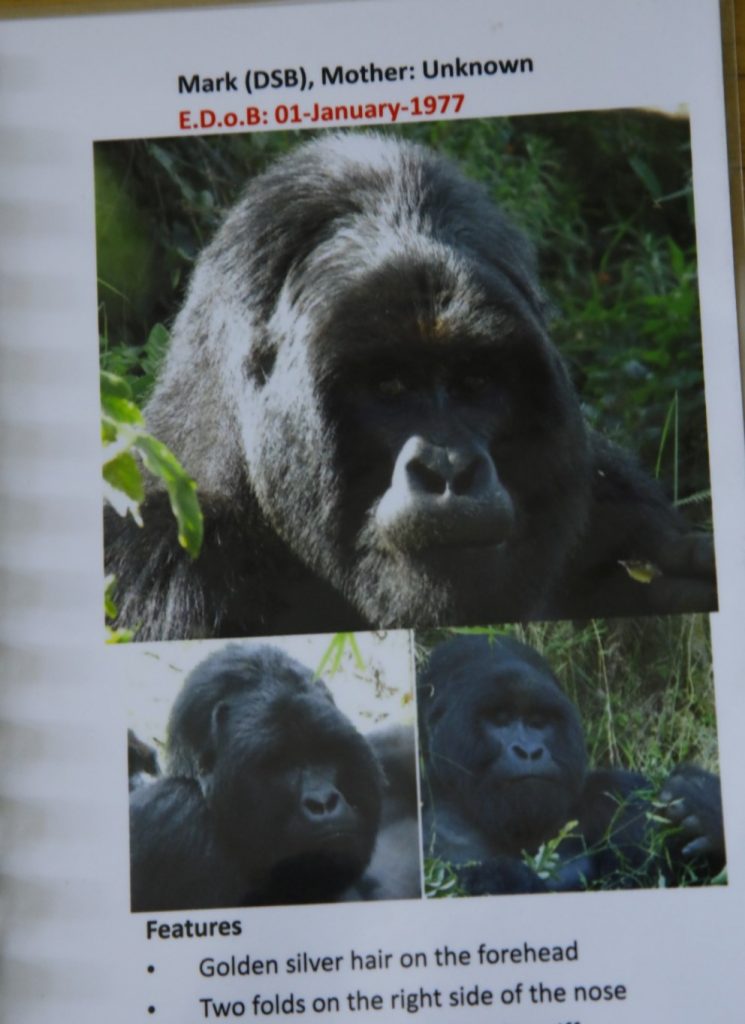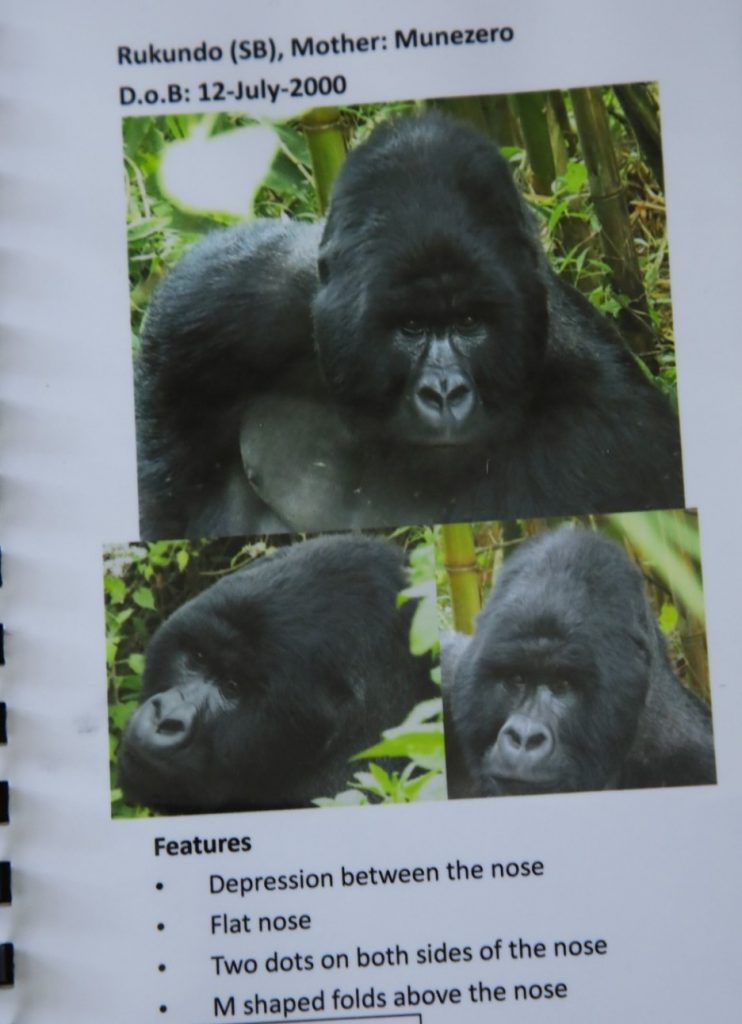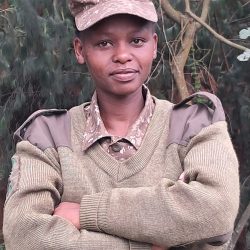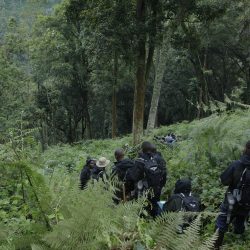Fingerprints are to Humans as Nose Prints are to Gorillas!
Blog | 5/08/24
With over 1000 mountain gorillas in the enormous Virunga – Bwindi landscape, how on earth can one tell mountain gorilla individuals apart? This question kept springing in my mind, and many can relate!

Whereas most mountain gorillas look somehow different and can be identified on sight, based on size, body and facial structures, there are some individuals that look almost similar, at least from a distance and can only be identified by their unique nose prints. Just like humans have unique fingerprints per individual, gorillas too have nose prints unique to each individual. According to the Dian Fossey Fund, among all the gorilla subspecies, mountain gorillas have the most distinct noseprints.

“Noseprints for mountain gorillas help in individual identification which is very important in individual recognition and easy monitoring – for both behavioral and health data. These are wrinkles on top of the noses unique to each gorilla just like fingerprints for humans,” says Eustrate Uzabaho, IGCP Field Officer.
Gorilla Noseprints Differ!
Gorilla noseprints come in different forms, shapes and sizes, and these unique patterns have solved the gorilla identification paradox over the years! “Mountain gorilla noseprints really differ. Some individuals may have a dot or perhaps two dots, while others may have wrinkles that range from one-fold to many folds,” says Jacob Nahabwe – Ecological Research and Monitoring Ranger based in Mgahinga Gorilla National Park.

Nahabwe adds that, “Some gorillas have bold noses while others have flat or even triangular noses, some nose prints have depressions while some gorillas have extended nostrils”.
Identifying mountain gorillas by their unique nose prints dates to the 1950s when field scientist George Schaller was researching about mountain gorillas. The practice was later adopted by Dian Fossey who would take images of the unique nose prints, stick them to the wall and study them during her free time. Since then, researchers have been using noseprints as identifiers for each habituated mountain gorilla.
Bwindi Mgahinga Conservation Area rangers started identifying gorillas by their noseprints in 1991. Tracking teams could give names to gorilla individuals by identifying nostril features. Noseprints are a great accurate tool when it comes to identifying gorilla individuals! “Not even a father can have similar nose prints with the son! Family members may have similar physical features, but the nostrils will always differ,” exclaims Damascene Hakizimana, Research and Monitoring Warden for Volcanoes National Park.
How about Gorilla Infants?
Just like human babies keep evolving and changing in appearance, so do gorilla babies. This explains why identifying let alone confirming baby gorilla noseprints takes a while. “All baby gorillas look alike when they are born. It is hard to even tell a male from a female for example,” says Jaques Katutu – Head of Ecological Monitoring in Virunga National Park.

It takes 1 to 3 years to confirm a baby gorilla noseprint and identify an individual by it. Within that time, nostril formation is ongoing and getting more distinct.
According to Eustrate Uzabaho nostrils are a great feature that helps scientists and field staff to keep track of all gorillas under daily monitoring and provides accurate demographic data tracking in a social group.
Ranger Jacob Nahabwe adds that the nose prints simplify monitoring and protection of the apes, for example when mountain gorilla individuals are sick, tracking teams can easily identify them and inform the gorilla doctors to intervene timely. “Noseprint identification also helps in reporting accurately on the different gorilla dynamics including accurate postmortem in case of deaths, births and transfers within gorilla groups,” Jacob notes.
Through my continued interaction with rangers and routine visits to mountain gorillas, I’ve gotten to realize and appreciate the use of nose prints in the identification of gorilla individuals! And of course, my lingering question about how these huge primates are identified got answered. I hope this article addresses your curiosity on mountain gorilla identification too!




